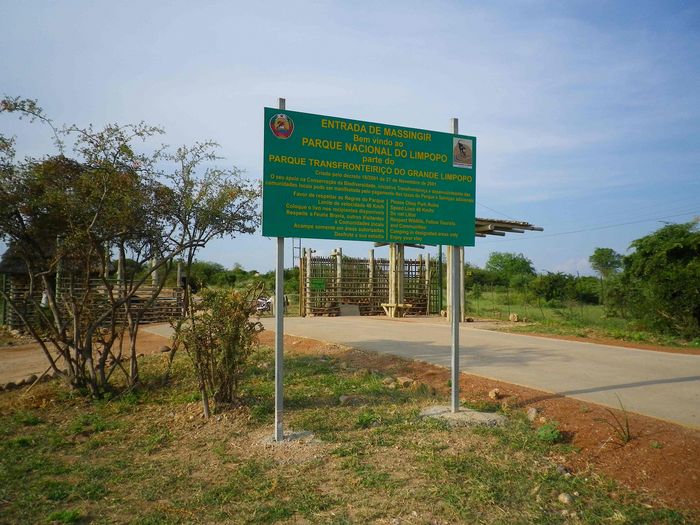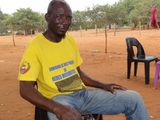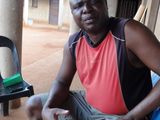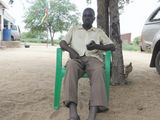After negotiating compensation packages to help rebuild their livelihoods, three communities agreed to resettle outside the Limpopo National Park. However, the park’s administration is taking its time to suit the action to the word – with severe effects on the resettled communities’ ability to produce food.
The Great Limpopo Transfrontier Park was established in 2001. It aims to promote international cooperation and develop tourism in Krueger National Park in South Africa, Gonarezhou National Park in Zimbabwe and Limpopo National Park in the South of Mozambique. Based on an agreement reached in 2002 between the managing Peace Park Foundation in South Africa, German Development Bank, and the Ministry of Tourism, Limpopo National Park decided to displace nine communities - totalling 7,000 families - from the core area of the Park. Traditionally, these families grow maize as their staple food, which can be farmed without irrigation.
Empty promises
Each community established a resettlement committee and went through a lengthy consultation process with the Park to come up with their individual Resettlement Action Plan. Compensation packages that promised the improvement of livelihoods and infrastructure convinced the communities to resettle. Today, three of the nine smallholder farmer communities have resettled to different parts of the district of Massingir. However, when I interviewed the resettled community leaders in March 2019, they gave testimony that many items agreed in the Plan have not been fulfilled and severely affect the communities’ ability to grow maize and thus their food security.
The area has not been affected by cyclones Idai or Kenneth that hit the central and northern parts of Mozambique earlier this year. But the region is currently suffering from drought. The lack of rain exacerbates the food security situation in the resettlements.
Waiting for Irrigation Systems
Makavene, a community of 164 families, left the Park in 2013. 52 families re-settled near the district center called Tihovene while the other 112 families re-settled about 20 km away in the hinterland of Banga. In 2018, both Makavene-Tihovene and Makavene-Banga cleared their collective farmland for irrigated agriculture as promised by the Park in order to secure food during the dry season. But the installation of water pumps remains slow.
In Makavene-Banga community the water pumps are still not installed. Community leader Fanuel Zita points to the water pumps, which are still in his house and not by the river four kilometers away. “No one came to install them… It rained now, so we are cultivating our farms without irrigation…but the rain stopped already, so the maize we planted dried up.” As a survival strategy, charcoal production is widespread, causing deforestation and further drought.
Makavene-Tihovene Community’s leader Jaime Fenias Ringane points out: “Finally…[after five years of waiting]…, we obtained the land and installed two water pumps… so we will produce. But we need to sell something while we wait to harvest our maize… Meanwhile, we have to survive on growing tomatoes and soya because they give fruits much quicker.” It takes time to adapt to the new conditions in the resettlement. The soil quality is poorer than in the Park. When selling new produce, such as tomatoes and soya, the leader fears severe competition from those more experienced in irrigated agriculture. Migration to South Africa for wage labor on plantations is likely to remain the major source of cash income in this resettlement.
Waiting for potable water
Nanguene was the first resettlement built in 2008 as a part of Chinangane community. Accroding to the community’s leader Alsão Moijmele the lack of potable water is the biggest problem. A water system was installed in 2018, “…but the water was not good and the government took away the water system without consulting us. We could have used the water for washing, but they just didn’t let us access the water.” Now, Nanguene women have to walk far to the river or get water from Chinangane community. “But they don’t accept us… When asked to share the water, they told us to buy water from them… They think we are drinking their water!”, says Alsão. The water issue represents a potential source of conflict between resettled and the host community.
Waiting for land
The community of Massingir Velho was resettled in 2015 and had serious problems with the quality of housing. Thus, over the last three years, the house repair was the main issue for them. “Currently, the problem is that we have not gotten the promised farm land of 18 hectares and the water pumps for irrigation. It is difficult to eat. Cedes (Ecumenical Committee for Social Development – a local NGO) helps us... I want employment if land is not there”, says Andrea Ngovene, the community’s leader.
Moving forward
The leaders’ voices show that the Park has neglected its promises to improve resettlers’ lives. The Park administration and governments at all level need to collaborate with these community leaders and supporting civil society organizations to accelerate the delivery of the promised items in order to enhance food security.
Dr. Kei Otsuki is an international development expert at Utrecht University. She has been conducting research on communities inside large scale land investment frontiers in Latin America and Africa.
Her published research can be found at: www.uu.nl/staff/KOtsuki






